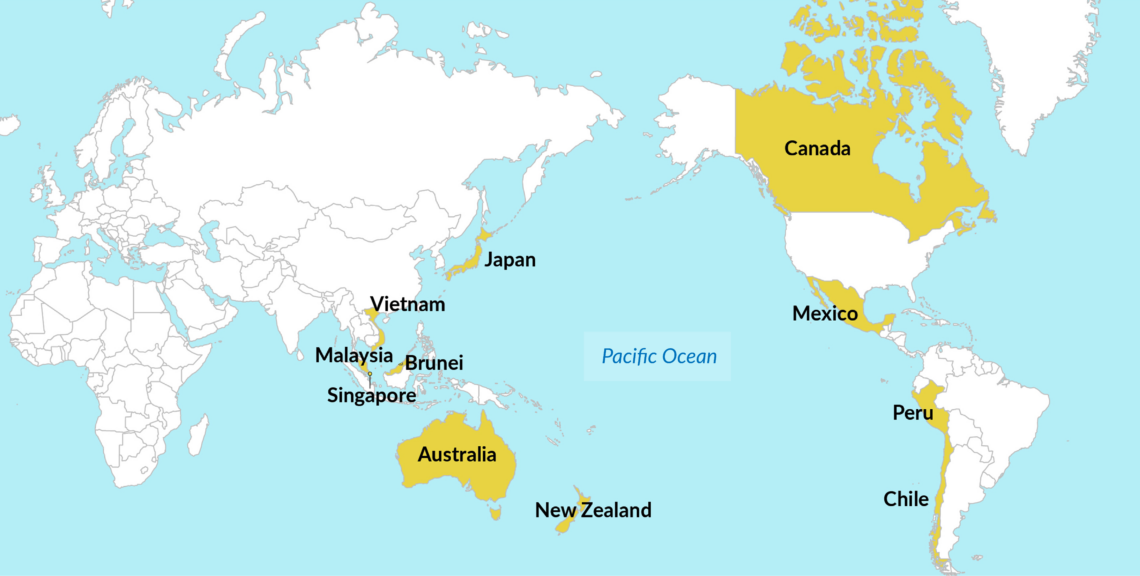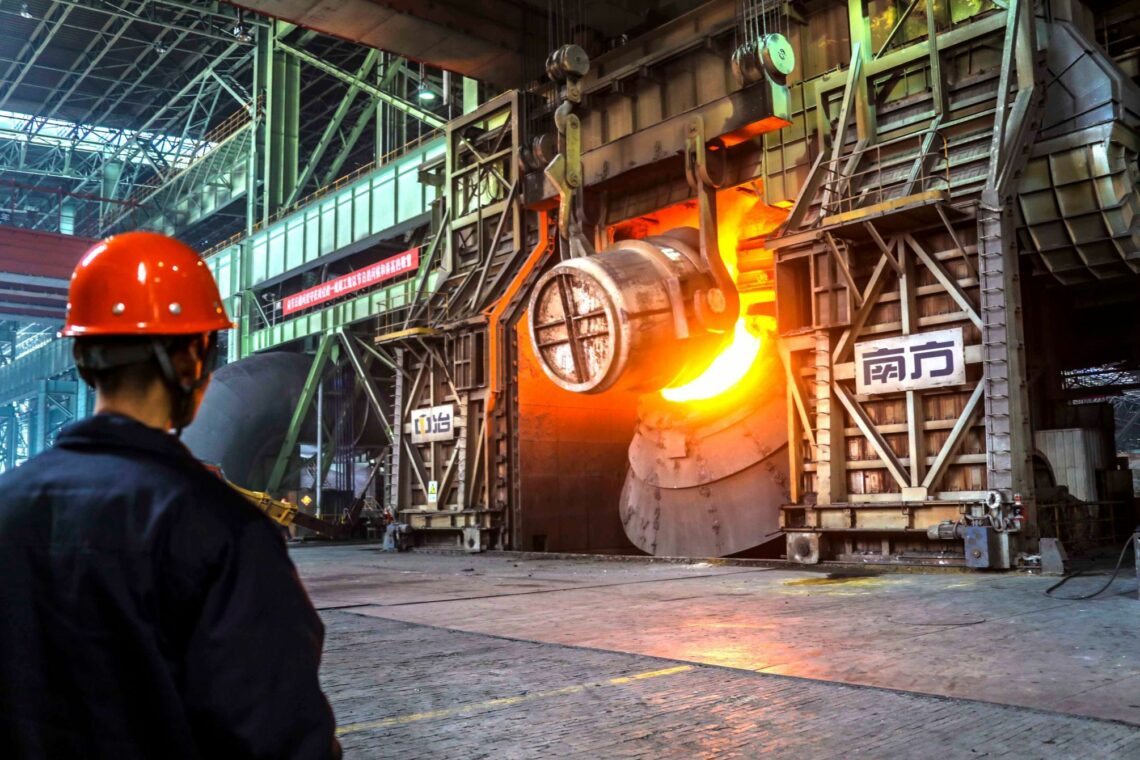The effects of U.S. trade policy in the Pacific
The Trump administration has made a big splash with its trade policy. The effects are already being seen in the Pacific region, after Washington’s decision to pull out of the Trans-Pacific Partnership, renegotiate the U.S.-Korea Free Trade Agreement and slap tariffs on steel and aluminum imports.

In a nutshell
- President Trump’s early moves on trade have unsettled allies in the Pacific
- His confrontational approach is likely to continue
- Free traders in the administration will try to soften the policies
- Either way, the U.S. is likely to be marginalized in the short term
Over the last year, international trade and investment politics in the Pacific have changed dramatically. The catalyst is the new government in Washington. What it does on trade policy and how the region reacts will go a long way toward determining the geopolitical picture there.
The administration of United States President Donald Trump has refashioned American trade policy. It is one very tightly focused on bilateral trade deficits and calls for reciprocity, not only in terms of access, but also in terms of outcomes. In President Trump’s view of trade, a deficit equates to a corporate loss in the business world. Appropriate trade relationships are balanced, or preferably, ones where the U.S. enjoys a surplus.
In this regard, it is trade in goods that interests President Trump. The U.S. surplus in services with China, for instance, does not matter. Neither does growth in exports, which in the case of China over the last 10 years, both in goods and services, has been dramatic. As long as the total of goods exports remains smaller than imports, the Trump administration will see it as a problem.
Many of the high points of this new approach are well known. There was the immediate pullout from negotiations on the Trans-Pacific Partnership (TPP), and the entry into renegotiations of America’s two largest free trade agreements – NAFTA and the U.S.-Korea Free Trade Agreement (KORUS). Most recently, the U.S. imposed tariffs on steel and aluminum imports, and has proposed additional tariffs on $50 billion worth of products in retaliation for China’s damage to the intellectual property rights of American companies.
Early moves
These are just the most prominent actions. The trend has been long in the making. There was a raft of executive orders and presidential memoranda very early on. In fact, the action on steel and aluminum imports was set in motion last April with orders to the Commerce Department to initiate an investigation into their effects on national security.
There were others as well:
- An executive order intended to pinpoint the causes of imbalances with 16 trading partners, including China, India, Indonesia, Japan, Malaysia, South Korea, Taiwan, Thailand and Vietnam
- An executive order prioritizing the enforcement of antidumping and countervailing duties (AD/CVD). In fact, by the end of the year, the Commerce Department boasted a 61 percent increase in such cases and the return to a practice of self-initiation – that is, the government acting on behalf of industries in the absence of them formally requesting it
- An executive order to more tightly enforce “buy American” laws
The most likely scenario is a continuation and intensification of the protectionist trend.
In January 2018, the Trump administration imposed heavy tariffs on imported solar panels and washing machines it claimed were surging into the U.S. This was the first time since 2002 that the U.S. had invoked the legal authority, granted in section 201 of the 1974 Trade Act, to do this. The tariffs imposed on China for its abuse of “American intellectual property rights, innovation, or technology development” taps into authorities (Section 301 of the same act) unused since the U.S. joined the World Trade Organization in 1995.
Aggressive approach
This new approach could take three directions. The most likely is continuation and intensification of the protectionist trend. When the investigations into steel and aluminum were first ordered, President Trump also mentioned “vehicles, aircraft, shipbuilding, and semiconductors” as critical elements of the U.S.’s industrial base in need of defending.
This is more than rhetoric. The administration is currently considering a new case targeting uranium imports. Moreover, in its 2019 budget submission to Congress, it requests funding to “address the increased workload associated” with such investigations and proposes the establishment of “a team specifically dedicated to enforcement and administration of Section 232 [of the 1962 Trade Expansion Act] cases.” The submission states that “there will likely be additional 232’s initiated either at the request of industry petitions filed with the Department or initiated by the Secretary.”

Regarding China, President Trump is already pursuing tariffs on $100 billion in goods in response to China’s retaliation to the first tranche of $50 billion. In addition to these areas, this direction envisions the continued, muscular use of safeguard measures, such as those used on solar panels and washing machines, and American AD/CVD law, as well as continued emphasis on the full use of “buy American” provisions of U.S. law.
Trade diplomacy will probably not offer respite from this approach. Ever since scrapping U.S. membership in TPP, the administration has proposed bilateral agreements as an alternative. However, the current context makes outreach on potential new trade agreements in Asia very challenging.
Japan is the Trump administration’s primary target. The Japanese, however, are uninterested in a bilateral agreement. They made concessions in the context of the TPP, in areas like agriculture and autos, that, for political reasons, they are unable to make in a bilateral agreement. Besides, they and other potential partners are very closely watching U.S. negotiations on NAFTA and KORUS, and are taken aback by what they see. Unreasonable demands, calls for voluntary restraint agreements, particularly on exports, gridlocked negotiations, public recriminations and persistent threats of withdrawal – U.S. trading partners in Asia want nothing to do with such a dynamic.
There are two other problems with the administration’s bilateral alternative. First, the U.S. tried earnestly during the administration of President George W. Bush to reach agreements with Thailand and Malaysia. Both negotiations failed after multiple rounds of formal talks. It is difficult to imagine that it will be any easier for these countries to agree to deals now.
Trade diplomacy will probably not offer respite from this aggressive approach.
Secondly, the Office of the United States Trade Representative (USTR) simply does not have the resources to effectively take on new negotiations. Even as it renegotiates NAFTA and amends KORUS, USTR has been given the responsibility of reaching exemption agreements on the 232 tariffs with individual countries that can provide alternative ways of meeting President Trump’s concern about the national security implications of steel and aluminum imports. He has identified six countries plus the European Union as priorities in this regard, but has put imposing any new tariffs on them on hold. For all other countries, including Japan and Taiwan, the tariffs will go into effect unless and until they are able to reach similar separate agreements addressing President Trump’s concerns.
Softer action
The second scenario posits an effective fight by free traders both within the administration and in Congress to soften the administration’s approach.
There is some precedent for this. The 232 action began with a very aggressive impromptu statement by President Trump suggesting immediate, across-the-board tariffs of 25 percent on steel and 10 percent on aluminum. After a week of intense lobbying from business and free-trade legislators, the policy was relaxed. Canada and Mexico were excluded for an unspecified period and others later given a pathway to exemption referenced above. There is also a process for American importers to seek specific exclusions for products not otherwise available in the American market – a mechanism importers of Japanese steel are bound to make use of.
In the case of the 301 action, a process has been established to receive public comment on the 1,300 tariff lines covered. No tariffs have yet been implemented.
The debate over trade within the administration drove President Trump’s principal economic advisor and supporter of free markets, Gary Cohn, to resign. In a sign that free traders will continue to fight from within, however, President Trump named Larry Kudlow as Mr. Cohn’s replacement. Mr. Kudlow is a well-known supporter of free markets and has been highly critical of President Trump’s steel and aluminum tariffs.
Free traders in the administration and the business community will continue to fight the protectionists.
Similarly, President Trump’s new nominee for Secretary of State, Mike Pompeo, had a strong record of supporting free trade during his three terms in Congress. He voted in favor of agreements with South Korea, Colombia and Panama, and supported the highly controversial provision of Trade Promotion Authority in 2015 (which gave the president extended powers in brokering trade agreements). In Secretary of Defense General Jim Mattis, President Trump also has someone inclined to defend the trading relationships with allies and security partners.
Congress itself has become energized on the issue of trade. Key figures in the Republican party, like Senate Majority Leader Mitch McConnell, House Speaker Paul Ryan and the Chairman of the Senate Finance Committee Orrin Hatch, have publicly been highly critical of much of the administration’s trade policy. They, and the leadership of the House Committee on Ways and Means, are also fighting behind the scenes to bring President Trump’s leadership on trade into better sync with traditional Republican positions. So far, Congress has shied away from formally asserting its constitutional authority on trade.
A reported agreement in principle on amendments to KORUS has given the likelihood of this scenario a boost. The actual measures involved–increased access to the Korean auto market, extended protection of the U.S. light truck market, and a non-enforceable deal to restrict export enhancing currency manipulation – are largely cosmetic. The U.S., however, did get a commitment from South Korea to curtail its exports of steel to the U.S.
Free traders in the administration and the business community will continue to fight the protectionists in the Trump administration. They could end up softening action in all the areas mentioned above. U.S. trade policy would still become more protectionist, but to a degree that may limit the damage to the American economy and trade relationships in the region.
Reversal
The least likely direction is a reversion to a Bush-era focus on bilateral trade agreements or reentry into TPP. The remaining 11 members of the TPP have moved on without the U.S., and since that agreement must be negotiated with each member, rejoining would be a very fraught process. And for reasons discussed above, the prospects for bilateral agreements are similarly complicated. As for the emphasis on trade reciprocity and trade remedies, this is an integral part of the administration’s approach, very formally and meticulously outlined in various official documents. It will not change.
Geopolitical implications
Either of the two most likely directions will affect the U.S. role in the Pacific and therefore the geopolitical picture there. It is simply a matter of degree and prospects for recovery.
The region is already adjusting to the new reality. Signs of this are its unexpected success in pushing through with the TPP-11 and Japan’s free trade agreement with the EU. These agreements are only the latest additions to a very broad range of agreements in the region that already exclude the U.S. There is the network of ASEAN-centered trade agreements in place, including with China, Japan, South Korea, India, Australia and New Zealand. There is the Regional Comprehensive Economic Partnership (RCEP) involving negotiations with all six. South Korea already has an agreement with the EU. The EU also has agreements pending with Singapore and Vietnam, and is in negotiations with many others in the region.
The Trump administration’s unilateral approach to trade will have the effect of marginalizing the U.S.
In the face of this sort of activity, regardless of the region’s continued desire for access to the U.S. market and American investment, the Trump administration’s unilateral, “America-first” approach to trade will have the effect of marginalizing the U.S. The Pacific has long been intensely interested in economics, not conflict. U.S. military involvement in the region (which will likely see an uptick) and diplomatic engagement (which is doing much better under President Trump than expected) will not make up for a demonstrated lack of interest in the economic life of the region.
This will result in China – which has already surpassed the U.S. in its trading relationship with most of the region – being seen as a more constructive player in the region. This development will only be enhanced by projects like its Belt and Road Initiative, which promise to deliver desperately needed infrastructure investment. This is destabilizing because China’s economic initiatives are so closely related to its broader strategy to gain primacy in the region.
Integrated with its growing diplomatic and military role, this increased Chinese stake will threaten U.S. interests, including freedom of the seas and its relationships with Japan and Taiwan. Without a constructive American economic response, tensions will ratchet up between the U.S. and China. With countries viewing China as a more reliable economic partner, the region will be divided in response. At best, this will translate into greater tension throughout the region. At worst, it will also feed a Chinese narrative of American interference, which will contribute further to the decline of U.S. influence.
In reaction to this, Japan will continue to grow its own economic footprint to compete with China. Neither it, nor Europe’s economic stake, however, will be enough to make up for the U.S. absence. Europe’s involvement, untied to any integrated strategy, will do little to counter Chinese power. Japan’s – given continued, intense distrust of it in Northeast Asia – will ultimately compound tensions. The first scenario will rapidly precipitate such events. The second will slow them and provide an opportunity for correction later.







